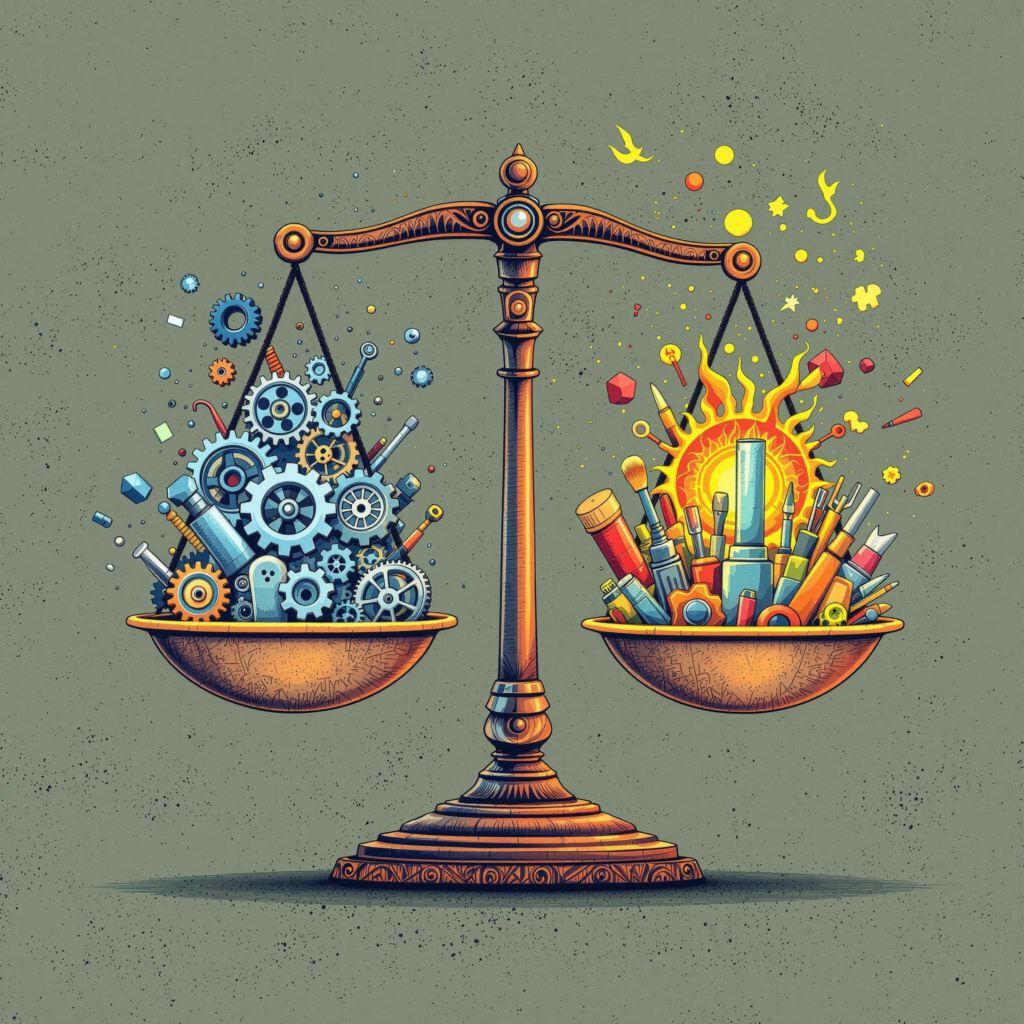Creating a website that is both visually compelling and highly functional is a delicate dance. Too often, design choices either favor aesthetics at the expense of usability or emphasize performance without visual appeal. Today’s users expect fast, easy-to-navigate websites with captivating design elements that reflect a brand’s personality. Balancing functionality and style in web design is no longer optional—it is essential.
This post explores how designers can strike this balance effectively, offering actionable tips, real-world examples, and best practices to ensure your website performs well while leaving a lasting impression.
Why Functionality and Style Must Coexist
In the early days of the web, flashy graphics often took precedence over user experience. Flash intros, autoplay music, and overcomplicated layouts defined many early sites. Thankfully, modern web design has matured, placing emphasis on user-centered design, accessibility, and mobile responsiveness. However, the core challenge remains—how do you ensure your website looks good while delivering a seamless experience?
Here’s why balancing functionality and style is vital:
- Improves User Engagement: Functional, attractive websites reduce bounce rates and increase time-on-site.
- Boosts Conversion Rates: A well-designed user interface supports user goals, leading to more conversions.
- Enhances Brand Perception: A cohesive visual style elevates brand identity and builds trust.
- Strengthens SEO Performance: Google rewards websites that offer excellent usability and quick loading speeds.
Key Principles of Functional Web Design
Functionality refers to how well your website works for its users. At its core, a functional design makes navigation intuitive, content accessible, and interactions meaningful.
1. Intuitive Navigation
Navigation is the backbone of usability. Users should find what they’re looking for in three clicks or less.
Tips:
- Use a consistent layout across all pages.
- Include a clear call-to-action (CTA) in each section.
- Prioritize search bars for content-heavy websites.
2. Responsive Design
With over half of global web traffic coming from mobile devices, responsive design is non-negotiable.
Best practices:
- Use flexible grids and media queries.
- Avoid fixed-width layouts.
- Test your design across multiple screen sizes.
3. Fast Load Times
Speed affects both SEO and user satisfaction. Even a one-second delay can significantly reduce conversions.
Optimization tips:
- Compress images and use modern formats like WebP.
- Minimize HTTP requests and leverage browser caching.
- Use lazy loading for media elements.
4. Accessibility
Inclusive design ensures your site works for all users, including those with disabilities.
Implement accessibility by:
- Adding alt text to all images.
- Ensuring color contrast meets WCAG standards.
- Making your site keyboard and screen-reader friendly.
Key Elements of Stylish Web Design
Style reflects your brand’s voice and helps form emotional connections with users. But style should never come at the expense of usability.
1. Consistent Branding
Visual consistency enhances brand recognition. Fonts, color schemes, and iconography should align with your brand identity.
Design guidelines:
- Stick to two or three primary colors.
- Limit fonts to two complementary typefaces.
- Apply uniform button styles across the site.
2. High-Quality Visuals
Using sharp, relevant images enhances the user experience and strengthens your content.
Visual content tips:
- Use original photography or premium stock images.
- Incorporate icons and illustrations to break up text.
- Optimize visuals for fast loading without losing quality.
3. Engaging Typography
Typography affects readability and overall design aesthetics.
Best practices:
- Choose legible fonts for body text.
- Use font hierarchy (H1, H2, H3) to guide the reader.
- Ensure line spacing and size improve readability.
4. Thoughtful Use of White Space
White space—also known as negative space—prevents visual clutter and focuses user attention.
To leverage white space:
- Avoid overcrowding content blocks.
- Allow room between images, text, and buttons.
- Use white space to establish a visual hierarchy.
Where Function Meets Style: Practical Integration
The most successful websites blend style and functionality seamlessly. Let’s look at real-world integrations and how to achieve them.
Example 1: Apple
Apple’s website exemplifies balance. With minimal text, clean typography, and generous white space, it prioritizes both form and function. Navigation is straightforward, and product information is easy to digest.
Takeaway: Minimalist style can still be functional and impactful.
Example 2: Airbnb
Airbnb incorporates bold visuals and user-friendly functionality. The search interface is intuitive, while the aesthetic reinforces a sense of community and travel inspiration.
Takeaway: Use imagery and layout to guide user action without overwhelming them.
Tips to Achieve Balance in Your Web Design
Striking the right balance requires intentionality. Use these design tips to ensure that function and form coexist harmoniously.
1. Start with User Intent
Before choosing a color scheme or font, understand what users need. Conduct user research, create personas, and define user journeys.
Why it matters: Design grounded in user intent ensures functionality drives the experience.
2. Prototype Before You Build
Wireframes and mockups allow you to test layouts, navigation, and visual elements without heavy development.
Tool suggestions:
- Figma
- Adobe XD
- Sketch
Why it helps: Early testing identifies usability issues before they impact users.
3. Maintain Visual Hierarchy
Make it easy for users to scan content and act on it. Use size, color, and placement to direct attention.
Practical advice:
- Highlight CTAs with contrasting buttons.
- Use headings to break content into logical sections.
- Avoid overusing animations or parallax effects.
4. Audit and Iterate
Design is an ongoing process. Use analytics, heatmaps, and user feedback to refine the balance.
Tools to use:
- Google Analytics
- Hotjar
- Microsoft Clarity
Why it matters: Continuous improvement leads to sustained user engagement and better SEO results.
SEO Considerations in Balanced Design
Functional and stylish design elements can also improve search engine rankings. Here’s how:
1. Mobile-First Design
Google prioritizes mobile-friendly sites in its indexing.
SEO Tip: Use mobile testing tools like Google’s Mobile-Friendly Test to assess performance.
2. Semantic HTML and Structured Data
Semantic tags and schema markups help search engines understand content context.
Example:
- Use
<article>,<section>, and<aside>correctly. - Implement JSON-LD for FAQs, reviews, and products.
3. Optimized Media
Large, unoptimized images slow your site and reduce rankings.
Quick fixes:
- Compress files.
- Use descriptive filenames and alt tags for SEO.
- Implement lazy loading.
4. Fast Page Load Speed
Core Web Vitals (like LCP, FID, and CLS) directly impact SEO rankings.
Tools to use:
- Google PageSpeed Insights
- GTmetrix
- Lighthouse
Common Mistakes to Avoid
Many websites fail to achieve balance because of design missteps. Here are common pitfalls and how to avoid them.
1. Style Over Substance
Design choices like auto-playing videos or complex animations can frustrate users.
Fix: Prioritize usability over trendy effects.
2. Inconsistent Visual Identity
Using too many colors, fonts, or design elements weakens brand recognition.
Fix: Create and follow a brand style guide.
3. Poor Mobile Optimization
A stylish desktop site that breaks on mobile alienates users.
Fix: Design mobile-first or use responsive frameworks.
4. Ignoring Accessibility
Design that looks great but excludes users with disabilities can lead to legal issues and lost traffic.
Fix: Audit accessibility with tools like WAVE or Axe.
Conclusion: Harmony Drives Results
Balancing functionality and style in web design isn’t just about aesthetics or speed—it’s about providing a holistic user experience. A functional website ensures users can achieve their goals efficiently, while stylish design elements create emotional impact and brand loyalty.
Start by understanding your audience and their intent. Then, layer in thoughtful design choices that reinforce usability. Test, iterate, and always prioritize accessibility and mobile responsiveness.
Whether you’re building a landing page, ecommerce store, or personal portfolio, remember this: A balanced website doesn’t just look good—it performs well too. And that’s what modern web design is all about.
Future-Proofing Your Web Design Strategy
As technology and user expectations evolve, maintaining the balance between functionality and style in web design requires forward-thinking. Trends like voice navigation, dark mode, AI-driven personalization, and motion UI continue to influence how users interact with digital platforms. To stay ahead, designers must adapt quickly while keeping core usability principles intact.
Incorporating scalable design systems and component-based frameworks can help maintain consistency and streamline future updates. Tools like design tokens, UI libraries, and headless CMS platforms make it easier to roll out changes without disrupting user experience. Furthermore, regular performance audits and A/B testing allow you to refine your design based on real user behavior, not assumptions.
Don’t forget about inclusivity. As regulations around digital accessibility grow stricter, being proactive ensures your design reaches more users while avoiding legal risks. Focus on adaptable layouts, voice-friendly structures, and inclusive color palettes to make your website more accessible to everyone.
Balancing style and functionality is not a one-time task—it’s an ongoing journey. Keeping your design agile, test-driven, and user-centric allows you to create websites that thrive amid shifting trends and user needs.
Ready to Build a Website That Looks Great and Works Even Better?
If you’re looking to create or redesign a website that blends beauty with performance, we’re here to help. Our expert web design team specializes in crafting responsive, accessible, and SEO-optimized websites that elevate your brand and engage your audience.
Discover how to balance functionality and style in web design to create engaging, user-friendly, and high-performing websites.
Contact us today to schedule a free consultation and discover how we can bring your vision to life—without sacrificing usability or style.


One Response
Having experienced the transformation of a website’s look and feel through enhanced design and usability, it is hard not to be impressed by Balancing Functionality and Style in Web Design. This service has clearly brought a level of polish and efficiency that makes interacting with a site both enjoyable and intuitive. The overall aesthetic is modern yet practical, striking a perfect synergy between creative design elements and robust functionality.
Users can notice that every detail has been carefully considered. The layout is arranged in a way that promotes smooth navigation, enabling visitors to find what they need without confusion. Elements like clear call-to-actions, friendly typography, and thoughtfully placed imagery come together to create an engaging experience that stands out in today’s crowded digital marketplace.
The quality and condition of the work speak volumes about the expertise behind the design. Materials used for the graphical interface and the strategic placement of content emphasize professionalism while remaining creative. For collectors or business owners looking into web design services, this balance can be the key differentiator in converting casual visitors into loyal customers.
With a keen eye for user behavior and digital trends, this approach to design brings both functionality and appealing aesthetics to the forefront, providing outstanding value. The combination of technical expertise and artistic vision is commendable, making it a reliable choice for any website that wants to remain competitive while also telling its unique brand story. Overall, the experience has been tremendously positive—an excellent investment for those looking to elevate their online presence in a way that is both stylish and highly effective.